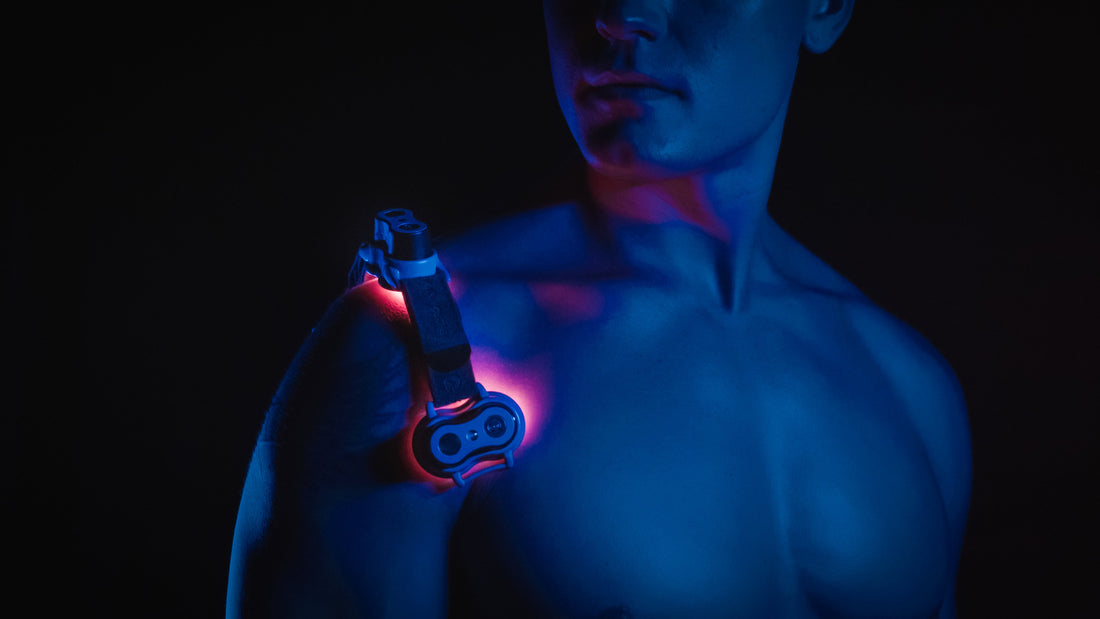
Photobiomodulation and Enhanced Blood Circulation: Understanding the Benefits of Light Therapy for Cardiovascular Health
Share
Improved blood circulation is crucial for overall health, as it ensures that our tissues receive adequate oxygen and nutrients while also facilitating waste removal. Light therapy, also known as photobiomodulation, has been shown to promote better blood flow and circulation, contributing to overall well-being and symptom relief. This article will explore the science behind light therapy's impact on blood circulation and present five influential research papers that have shaped our understanding of this therapy.
How Light Therapy Enhances Blood Circulation
Light therapy uses specific wavelengths of light, typically in the red and near-infrared spectrum, to stimulate cellular processes within the body. When absorbed by the skin, these wavelengths can trigger various physiological responses that promote better blood circulation, including:
- Vasodilation: Light therapy can stimulate the release of nitric oxide, a molecule that relaxes blood vessel walls, allowing for increased blood flow.
- Angiogenesis: Light therapy can promote the formation of new blood vessels, improving overall circulation.
- Enhanced oxygenation: By stimulating cellular respiration, light therapy can improve tissue oxygenation, supporting optimal cellular function.
Five Influential Research Papers on Light Therapy and Improved Blood Circulation
1. Lohr, N. L., Keszler, A., Pratt, P., Bienengraber, M., Warltier, D. C., & Hogg, N. (2009). Enhancement of nitric oxide release from nitrosyl hemoglobin and nitrosyl myoglobin by red/near-infrared radiation: potential role in cardioprotection. Journal of Molecular and Cellular Cardiology, 47(2), 256-263.
This study investigated the effect of red and near-infrared light therapy on the release of nitric oxide from nitrosyl hemoglobin and nitrosyl myoglobin. The results demonstrated that light therapy enhances nitric oxide release, which can lead to vasodilation and improved blood circulation.
2. Uzdensky, A., & Gisbrecht, N. (2015). Optical properties of blood and photobiomodulation mechanisms. Photodiagnosis and Photodynamic Therapy, 12(4), 576-593.
In this review, the authors provide a comprehensive overview of the optical properties of blood and the potential mechanisms through which photobiomodulation can influence blood circulation. The review highlights various studies demonstrating the positive impact of light therapy on blood flow, oxygenation, and angiogenesis.
3. Ferraresi, C., Hamblin, M. R., & Parizotto, N. A. (2012). Low-level laser (light) therapy (LLLT) on muscle tissue: performance, fatigue, and repair benefited by the power of light. Photonics & Lasers in Medicine, 1(4), 267-286.
This study explores the effects of low-level laser therapy on muscle tissue, including its impact on blood circulation. The authors found that light therapy can improve muscle performance and reduce fatigue by enhancing blood flow and oxygenation to the tissue.
4. Huang, Y. Y., Chen, A. C., Carroll, J. D., & Hamblin, M. R. (2009). Biphasic dose response in low-level light therapy. Dose-Response, 7(4), 358-383.
In this comprehensive review, the authors discuss the biphasic dose response observed in low-level light therapy and its potential implications for blood circulation. The review emphasizes the importance of selecting the appropriate dosage and wavelength for light therapy to optimize its effects on blood flow and overall cardiovascular health.
5. Secunda, R., Gilead, A., & Grossman, N. (2017). The effect of near-infrared MLS laser radiation on cell membrane structure and radical generation. Lasers in Medical Science, 32(8), 1929-1938.
This study examined the effects of near-infrared MLS laser radiation on cell membrane structure and the generation of reactive oxygen species. The results suggested that light therapy can improve cellular function, including enhancing blood flow and tissue oxygenation.
Conclusion
The research papers presented in this article provide valuable insights into the mechanisms and benefits of light therapy for improving blood circulation. By promoting vasodilation, angiogenesis, and enhanced oxygenation, photobiomodulation contributes to overall cardiovascular health and symptom relief in various conditions. As our understanding of the potential applications of light therapy continues to grow, it may become an essential tool for promoting optimal blood flow and maintaining overall health.
For more articles on photobiomodulation and light therapy, read:
